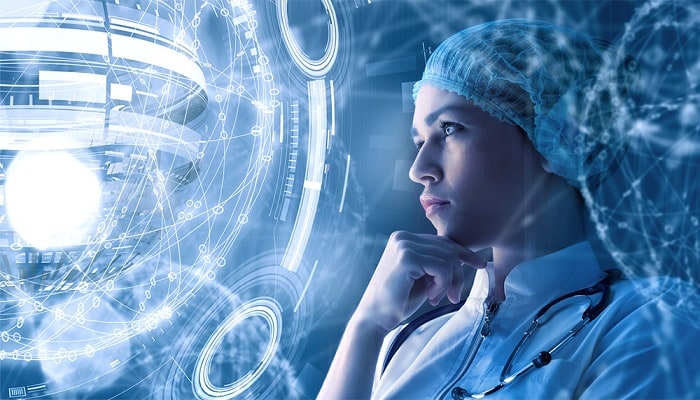Alan Turing (1950) was one of the founders of modern computers and AI.
The “Turing test” was based on the fact that the intelligent behavior of
a computer is the ability to achieve human level performance in
cognition related tasks. The 1980s and 1990s saw a surge in interest in
AI. Artificial intelligent techniques such as fuzzy expert systems,
Bayesian networks, artificial neural networks, and hybrid intelligent
systems were used in different clinical settings in health care. In
2016, the biggest chunk of investments in AI research were in healthcare
applications compared with other sectors.
AI in medicine can be
dichotomized into two subtypes: Virtual and
physical.
The virtual part ranges from applications such as electronic
health record systems to neural network-based guidance in treatment
decisions. The physical part deals with robots assisting in
performing surgeries, intelligent prostheses for handicapped people, and
elderly care.
The basis of evidence-based medicine is to establish clinical
correlations and insights via developing associations and patterns from
the existing database of information. Traditionally, we used to employ
statistical methods to establish these patterns and associations.
Computers learn the art of diagnosing a patient via two broad techniques
-
flowcharts and database approach.
The flowchart-based approach involves translating the process
of history-taking, i.e. a physician asking a series of questions and
then arriving at a probable diagnosis by combining the symptom complex
presented. This requires feeding a large amount of data into
machine-based cloud networks considering the wide range of symptoms and
disease processes encountered in routine medical practice. The outcomes
of this approach are limited because the machines are not able to
observe and gather cues which can only be observed by a doctor during
the patient encounter.
On the contrary,
the database approach utilizes the principle of deep learning
or pattern recognition that involves teaching a computer via repetitive
algorithms in recognizing what certain groups of symptoms or certain
clinical/radiological images look like. An example of this approach is
the Google's artificial brain project launched in 2012. This system
trained itself to recognize cats based on 10 million YouTube videos with
efficiency improving by reviewing more and more images. After 3 days of
learning, it could predict an image of a cat with 75% accuracy.
